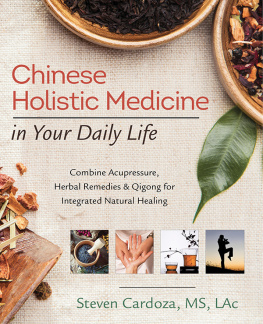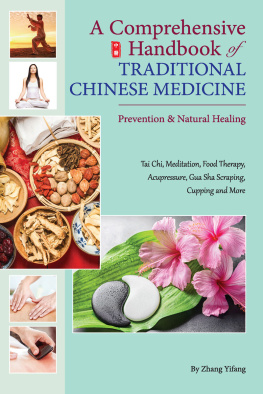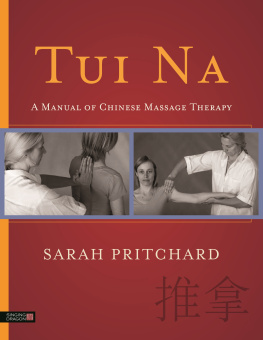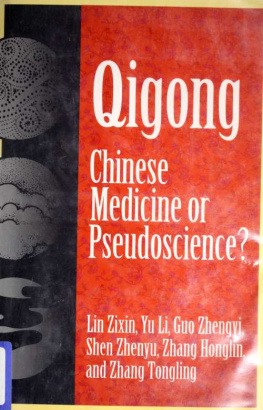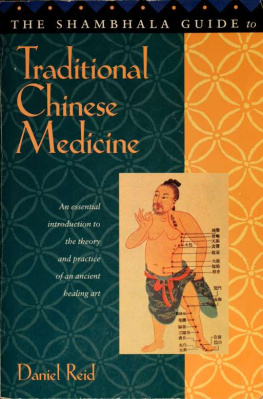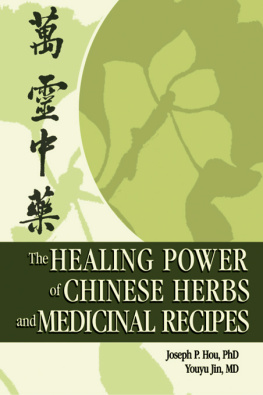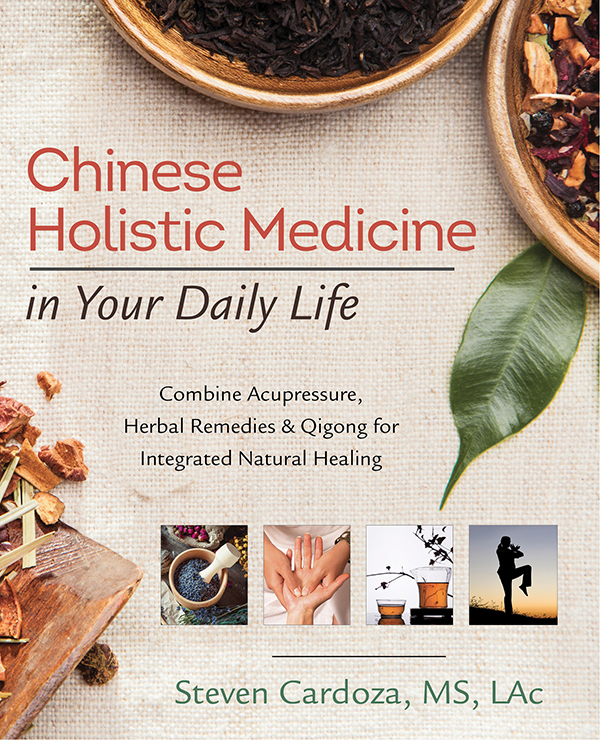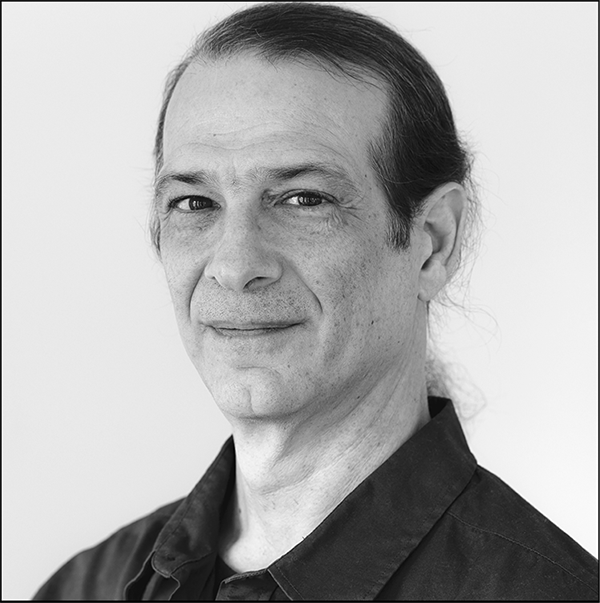Steven Cardoza earned a master of science degree in Traditional Chinese Medicine in 1994 from the American College of TCM, San Francisco. An alternative health provider since 1985 and a practicing Chinese medical physician (acupuncture, Chinese herbs, therapeutic bodywork, medical qigong, etc.) since 1995, he is nationally certified and licensed in California and Massachusetts. Steven holds numerous certifications in many styles of Qigong and Wu Taiji from living Daoist lineage holder Master B. K. Frantzis.

Llewellyn Publications
Woodbury, Minnesota
Copyright Information
Chinese Holistic Medicine in Your Daily Life: Combine Acupressure, Herbal Remedies & Qigong for Integrated Natural Healing 2017 by Steven Cardoza.
All rights reserved. No part of this book may be used or reproduced in any matter whatsoever, including Internet usage, without written permission from Llewellyn Publications, except in the form of brief quotations embodied in critical articles and reviews.
As the purchaser of this e-book, you are granted the non-exclusive, non-transferable right to access and read the text of this e-book on screen. The text may not be otherwise reproduced, transmitted, downloaded, or recorded on any other storage device in any form or by any means.
Any unauthorized usage of the text without express written permission of the publisher is a violation of the authors copyright and is illegal and punishable by law.
First e-book edition 2017
E-book ISBN: 9780738750958
Library of Congress Cataloging-in-Publication Data
Names: Cardoza, Steven, author.
Title: Chinese holistic medicine in your daily life : combine acupressure,
herbal remedies & qigong for integrated natural healing / Steven Cardoza,
MS, LAc.
Description: First edition. | Woodbury, Minnesota : Llewellyn Publications,
[2017] | Includes bibliographical references and index.
Identifiers: LCCN 2016045767 (print) | LCCN 2016046923 (ebook) | ISBN
9780738749303 | ISBN 9780738750958 (ebook)
Subjects: LCSH: Medicine, Chinese. | Integrative medicine.
Classification: LCC R601 .C374 2017 (print) | LCC R601 (ebook) | DDC 610dc23 LC record available at https://lccn.loc.gov/2016045767
Llewellyn Publications is an imprint of Llewellyn Worldwide Ltd.
Llewellyn Publications does not participate in, endorse, or have any authority or responsibility concerning private business arrangements between our authors and the public.
Any Internet references contained in this work are current at publication time, but the publisher cannot guarantee that a specific reference will continue or be maintained. Please refer to the publishers website for links to current author websites.
Llewellyn Publications
Llewellyn Worldwide Ltd.
2143 Wooddale Drive
Woodbury, MN 55125
www.llewellyn.com
Manufactured in the United States of America
Acknowledgments
Id like to extend my gratitude to all of the remarkable teachers and physicians Ive been privileged to learn from over the years, whose wisdom and insights shaped my own healing and teaching abilities and whose contributions to my growth helped make this book possible.
Thanks to the faculty of the San Francisco College of Acupuncture in 1991:
Robert Johns, a maverick who allowed me to attend his Advanced Classical Needling Techniques classes before I even knew how to properly locate a point.
Richard Liaoin addition to providing comprehensive herbal instruction, his treatments cured me of three types of asthma simultaneously, strongly motivating me to learn Chinese herbology.
John Yeh, MD, who first opened my eyes to the ways in which Western medical constructs and paradigms could be analyzed within the context of Chinese medicine.
Thanks to the faculty and staff of the American College of Traditional Chinese Medicine in 19911994 for their diligence and patience and for their passion and enthusiasm for sharing their knowledge of Chinese medicine. Those whose guidance remains most notable include Xingguo Fu, Denise Hsu, Daniel Jiao, Lifang Liang, Lee Wugofski, MD (Western medicine), and Baibing Zhu.
Thanks to all of the outstanding Qigong masters dedicated to imparting the deepest and most subtle aspects of Chinese healing and spirituality. Their teachings continue to influence and further my cultivation. Special thanks to three of the most personally significant, for generously permitting me to relay some of their inspired teachings in this book:
Master B. K. Frantzis, Daoist lineage holder and my primary Qigong teacher since 1987.
Deguang He, acupuncturist, herbalist, and medical Qigong physician.
Grandmaster Hong Liu, Qigong master, healer, herbalist, and medical researcher.
A special thanks to Michael Shear for contributing the photographs that were used to create many of the illustrations found in this book.
Contents
: An Integrated Approach to Natural Healing
: Foundational Theories in Chinese Medicine
: First Concept: Qi, The Energy of Life
: Second Concept: Meridians, The Pathways of Health
: Third Concept: Yin and Yang, Polarities, and Balance
: Introduction to the Internal Organs
: Zang: The Yin Organs
: Fu: The Yang Organs
: Pathogenesis: The Origins of Disease
: Introducing Patterns of Disharmony
: Selected Patterns of Disharmony
: Holistic Self-Care with Chinese Medicine
: Diagnosis: Finding the Root of the Problem
: Tools and Practice of Chinese Medicine: Holism and Integration
: Acupressure Self-Care: Your Healing Hands
: The Acupressure Points: Names, Locations, and Functions
: Chinese Herbs: Natures Healing Allies
: Chinese Herbal Formulas
: Introduction to Qigong: Harnessing the Energy of Life
: Qigong Practices for Each Organ
: Prescriptions: Restore and Maintain Inner Harmony
: Point Location by Body Region
: Chapter Notes
Disclaimer
This book is not intended as a substitute for medical advice from Chinese or Western physicians. It is not intended to diagnose, treat, or cure any medical condition. The reader assumes all responsibility for using any technique, herb, exercise, or dietary modification presented in this book. Consult your medical professional before beginning any new health or fitness regimen or if you have a medical condition.
Introduction
This book teaches both the theory and practice of natural healing methods used in China. Every branch of Chinese medicine is holistic, but there are numerous layers of holistic interconnection possible. In order to achieve the greatest synergy, they should be integrated according to the principles contained here. Thats how these methods are used to best advantage in China, with some variations as youll learn in .
The book is presented in two distinct yet intimately entwined parts and follows the guidance of many wise teachers Ive had the privilege to know over decades of study. Two core ideas were repeatedly encountered, and while some teachers worded them differently, the essential meanings were always the same.
The first core idea is In order to learn any practice or discipline well, you need both a solid intellectual understanding and a strong foundation in its practical application. All agreed that the actual practice (Qigong, Taiji, healing exercises, acupressure) or application of the method (acupuncture, herbal medicine, food therapies) is the ultimate goal. Greater intellectual understanding can support greater practical ability, but it is only valuable as it serves to further that end. Otherwise, it may provide for some interesting conversations but will not tangibly improve your health and life.

